Aston Martin Valkyrie: Le Mans awaits
Aston Martin is woven into the fabric of Le Mans but it hasn’t won overall since 1959. Is that about to change, asks Damien Smith
Drew Gibson
In one regard – and it’s one that really shouldn’t be dismissed – Aston Martin is guaranteed a sure-fire hit even before its new Valkyrie racing car has turned a wheel at the Le Mans 24 Hours. That’s because the mean, green machine you see in all its considerable glory here, and which is already hard at work racking up racing miles in both the World Endurance Championship and the North American IMSA SportsCar series, looks certain to be a new fan favourite when the 24 Hours rolls around come June. And not just with the British contingent. Just look at it. What’s not to love?
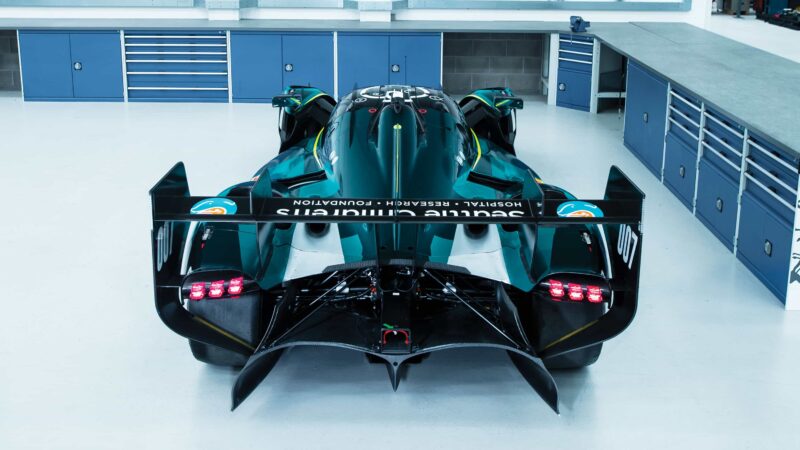
With just a few races under its belt, Aston’s Valkyrie is already a fan favourite
Drew Gibson
Then there’s the dazzling, yet also endearingly flawed heritage behind that winged badge. Aston Martin is sewn into the fabric of Le Mans history – for better and for worse. And best of all, the bit our stunning pictures can’t put across: that certain sound. Odin’s V12 thunder will boom across the Circuit de la Sarthe thanks to the Valkyrie, when the 62-car field is unleashed for the 93rd Le Mans 24 Hours on June 14. Who’d have thought an old-school, pure-bred V12 would still be the favoured choice for a high-profile manufacturer attack on the great race, in 2025? That’s got to warm the heart.
So yes, we love it already. At the same time, for all the aesthetics and emotion, racing cars are ultimately judged on cold, hard results. The big question that matters, then – and as always is: will the Valkyrie Hypercar prove to be a winner?

A Hypercar, yes, albeit not as powerful as the road-going Valkyrie
Drew Gibson
Not yet perhaps. But speak to the key players, from the suitably named Aston Martin THOR team entrusted to run it and the six drivers who will pedal it, and you sense a hard-edged optimism laced with gritty realism mixed within the touchy-feely stuff. Finally, after decades of intermittent plucky efforts – the Group C AMR1 of 1989, the Lola-based Aston Martin DBR1-2 of 2009 (not to mention the odd disastrous misfire such as the ill-conceived AMR-One of 2011) – Britain’s most charismatic sports car manufacturer might just have a palpable and genuine shot at a first overall Le Mans win since the exulted heroics of Roy Salvadori, Carroll Shelby and DBR1 way back in 1959. Just don’t expect it all to come together at the first time of asking this year.
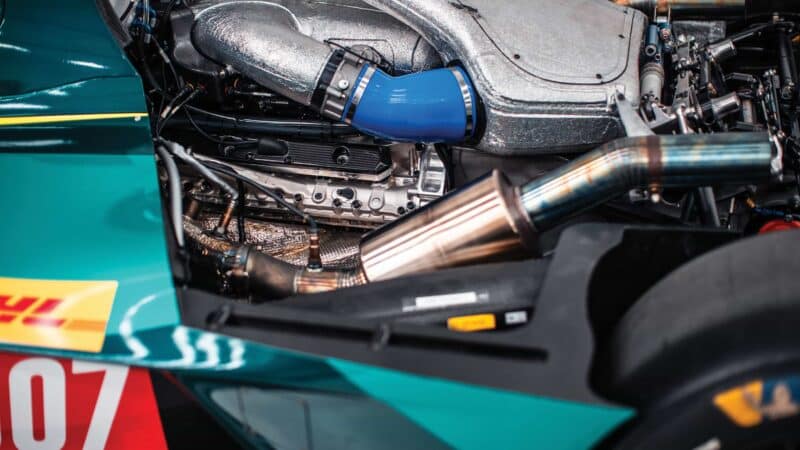
No hybrid here, just a 6.5-litre naturally aspirated V12.
Drew Gibson
The Valkyrie pitch has some punch. This is the only car built to the Le Mans Hypercar rulebook also adopted by Ferrari, Toyota and Peugeot that is contesting both the WEC and IMSA series, and of all 10 manufacturers currently committed to modern endurance racing’s thriving top tier it’s also the only model derived from a street car – although as one of its British drivers Harry Tincknell correctly points out, “The Valkyrie is not just any road car.” Originally conceived in 2016 as the ultimate production-based extreme performance car largely by Adrian Newey (never one to have much patience with the concept of compromise), the Valkyrie model wasn’t created specifically to win Le Mans. Yet much like Gordon Murray and his McLaren F1 from three decades ago, Newey couldn’t have devised his creation without the thought of racing guiding his hand, consciously or otherwise. As Adam Carter, Aston’s head of endurance motor sport, puts it: “It would be almost unimaginable for Adrian, one of the greatest racing car designers in history, to design a car and not think about it going racing at some point.”

Carroll Shelby, Aston Martin DBR1, Le Mans 1959
Now the Valkyrie will attempt to echo the McLaren F1 GTR’s achievement from precisely 30 years ago by transferring directly from the road to victory at the world’s most illustrious and famous endurance motor race. If it does so, if not this year then at some point before the end of the decade, one could argue it would be the ultimate validation for the whole concept of Hypercar and GTP as endurance racing’s premier class. After all, in the wake of the out-of-this-world LMP1 exotica that previously ruled Le Mans, the point of Hypercar in the first place was to create a top class that was relatable to the proverbial man on the street. The original Valkyrie itself was the inspiration for everything we now have and enjoy, and indeed should have been on the first Hypercar grids in 2021 – only for the pause button to be pressed in February 2020 amid a(nother) period of management upheaval at Aston Martin. There was a sense of inevitably when Lawrence Stroll released the play button in October 2023. This car was meant to race at Le Mans – even when it wasn’t.

The Valkyrie’s WEC debut was February’s Qatar 1812Kms.
“The Valkyrie hypercar is a moment in time in automotive history, and as part of that moment in time, it very much should also race to underline and cement its place in automotive history and its technological achievement,” says Carter with meaning. “By adhering to the Hypercar rules, it’s got a strong association to the DNA of that road car.”
“The familiar No007 entry nods to the still-valued Aston/James Bond association”
In relation to Newey’s original vision, that’s why the racing Valkyrie – on which it should be said the F1 designer has played no part – remains a pure-blood racer: no hybrid complexity, just straight, refreshing power from a modified version of the Cosworth-built 6.5-litre naturally aspirated V12 engine, with an accent on lean-burn efficiency. The V12 in so-called ‘standard’ road-going form (ha!) revs to 11,000rpm and develops over 1000bhp. The irony is in racing spec it won’t produce anywhere near that much because it’s not allowed to. By regulation, the racer – which shares more in common with the AMR Pro track day version than the original base model – is limited to 520kW (697bhp) within the Balance of Performance framework which is at the heart of Hypercar and which allows varying concepts under parallel rulebooks, LMH and LMDh, to race in apparent harmony.
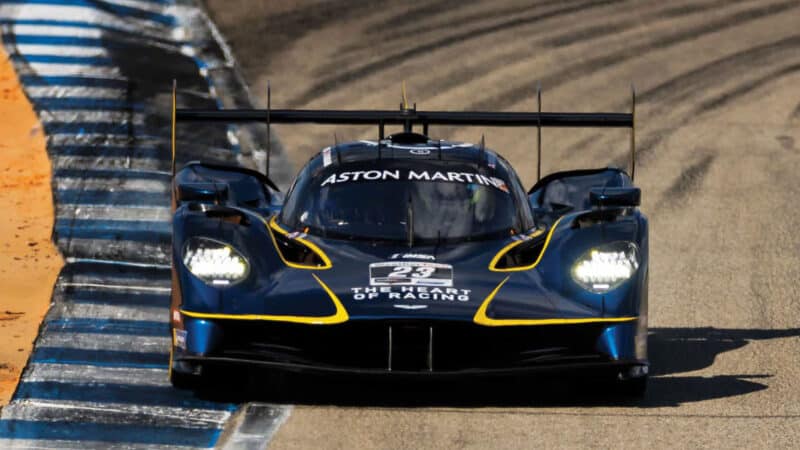
In IMSA, the Valkyrie made its first appearance in Round 2 at Sebring.
But even with less power, won’t the Valkyrie’s evolution from a road car, pitched against rivals with bespoke racers designed without street legality in mind, be at a disadvantage? In theory, no – again because of the way Hypercar has been conceived. “The performance is limited by the regulations, irrespective of development,” explains Carter. “There’s a minimum weight, a power limitation through driveshaft torque control and an aerodynamic performance window. Every competitors’ car gets measured in a full-size wind tunnel. So it’s about optimising the characteristics of the Valkyrie within the fundamental performance contributors.”
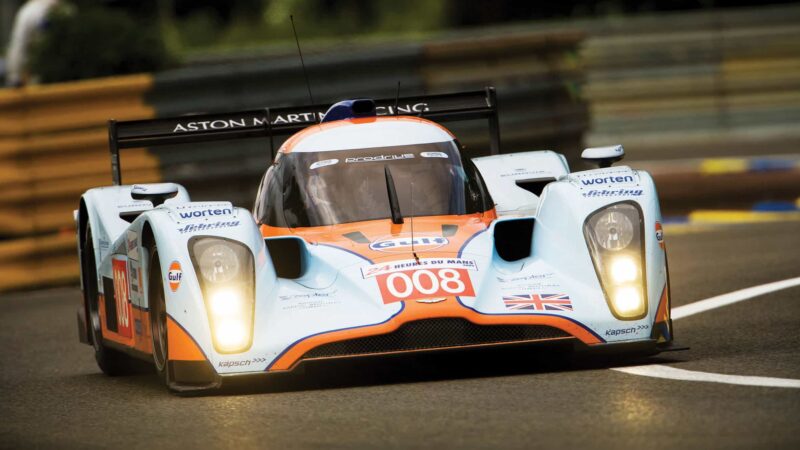
Lola-Aston Martin DBR1-2, Le Mans 2009
The Valkyrie heads to Le Mans less than a year after it first turned a wheel in anger. Developed in collaboration between the new Silverstone-based Aston Martin Performance Technologies, The Heart of Racing (that’s what THOR stands for) and prolific specialist Multimatic Motorsports, the car embarked on its testing campaign in July last year and is said to have topped 15,000km (9320 miles) of running from initial shakedowns at Donington Park and Silverstone, then on to Vallelunga and Jerez, before continuing in Bahrain, Qatar, Road Atlanta, Sebring and Daytona.
THOR is the US-based creation of Gabe Newell, who gets a lot of the credit for making this project a reality, and British expat Ian James, who Motor Sport first encountered 30 years ago when he was a serious-minded Formula Renault racer plying his trade in a thing called a Ronta – designed and built by a certain chap called Ron Tauranac. James subsequently emigrated and quietly built a formidable stateside reputation as first a highly dependable endurance racer, then as an increasingly accomplished team owner. He describes the project he now leads as a “pinch-me moment”.
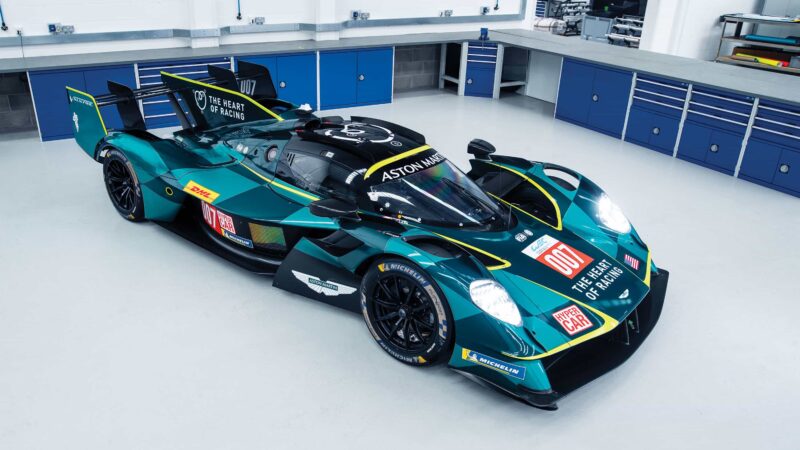
In 2019, Aston was the first manufacturer to add its name to the Hypercar roster but cancelled in 2020; it reversed its decision in late 2023
James signed half a dozen drivers familiar to him to lead the Valkyrie into battle: four for the two-car WEC campaign, two for the solo entry in IMSA. Five of the six are known THOR quantities having been drawn from its GT ranks. Even the ‘interloper’, experienced hand Tincknell, has been folded into this project from the start. The 33-year-old was earmarked for the original, cancelled Valkyrie racing project, has plenty of miles under him in the AMR Pro, has a long association with Multimatic and is even an Aston Martin Le Mans winner. One of his two class wins at the 24 Hours was achieved in a Vantage AMR in the old GTE Pro category back in 2020.
“The DNA of the car and the feel it offers gives me a lot of optimism that it will be successful”
In WEC, an all-British crew occupies the familiar No007 entry that nods to the still-valued Aston/James Bond association, with Tincknell joined by rising star Tom Gamble; in No009 are a pair of trusted THOR GT aces, Dane Marco Sørensen and Spaniard Alex Riberas. Briton Ross Gunn and Canadian Roman De Angelis arrive from the blue IMSA Valkyrie, with Gunn completing a patriotic three-driver No007 line-up for Le Mans and the other longer WEC races, and De Angelis the addition to No009.
Ahead of Le Mans and at the time of writing, the Valkyrie had raced twice. Its world debut came in the WEC season opener, with all six drivers on hand for the 10-hour Qatar 1812Kms, the first occasion THOR had run two cars together. Testing is all very well, but there’s nothing like race mileage to uncover a car’s true status. No one was surprised that it proved a modest debut as new-car bugs reared their heads. Sørensen was at the wheel of No009 in the second hour when the driver’s door unlatched because it had not been shut properly at a pitstop, and it then blew off as he returned to the pits a tad too fast. Nevertheless, the car made it to the chequered flag, 23 laps down on the winning Ferrari 499P. As for the British No007, gearbox trouble forced an early bath after 181 laps.
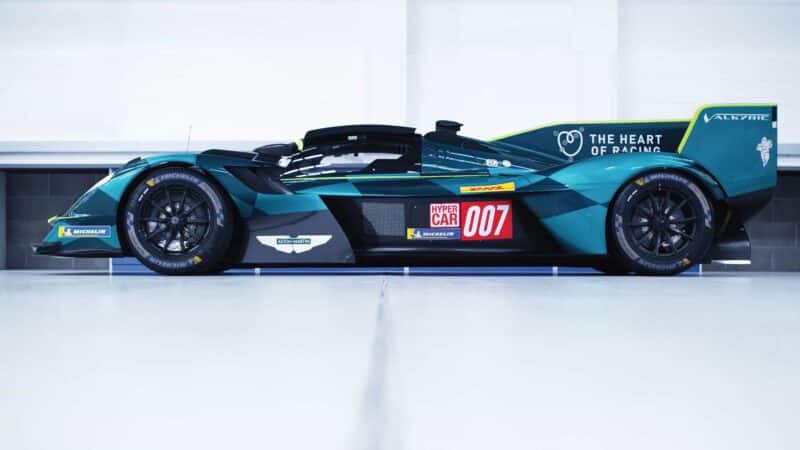
Although Adrian Newey wasn’t involved with the Valkyrie racing project, there’s a bit of him in this car
Drew Gibson
The following month Valkyrie took its IMSA bow at the Sebring 12 Hours. Gunn and De Angelis, joined in Florida by Riberas, qualified 12th and finished a respectable ninth on Sebring’s bumps, in what is recognised as one of the most gruelling races in the world. The trio found themselves limited to single stints in the Florida heat and the rough track surface highlighted key areas for development in suspension damping, but a top-10 finish was a reasonable return at this stage.
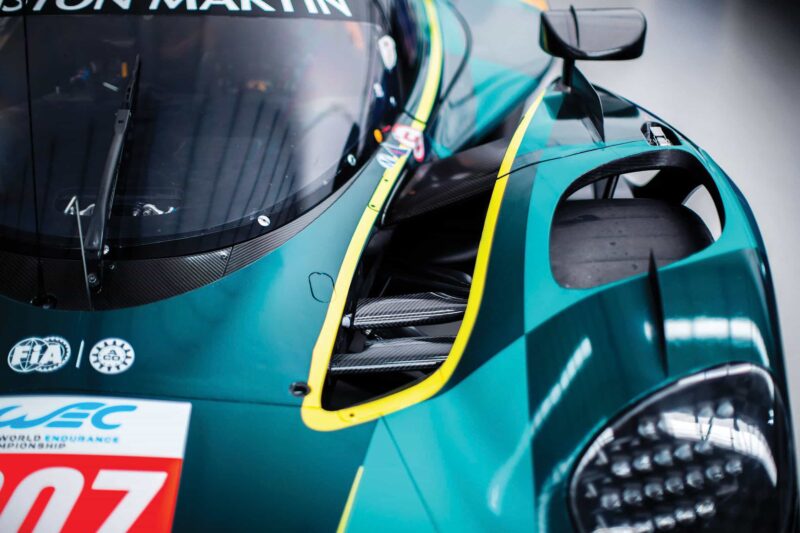
Inside the cockpit, systems have run smoothly in ’25.
Tincknell offers a driver’s snapshot of where the car is at. “Qatar we knew was going to be a huge learning experience,” he says. “It was the first time the team had come together with two cars and two sets of crew and all the drivers. We were really happy with how well the car ran at the Prologue and went into the race with the aim to get one car to the finish. We achieved that with the No009. The team faced typical new-car issues – funny how they always appear in the race when you haven’t had them through testing! But for us every single lap of data was vital for the rest of the year. We knew we wouldn’t need to build a new trophy cabinet just for Qatar, but the DNA of the car and the feel it offers gives me a lot of optimism that it will be successful.”

Testing of the race version started just a year ago
Tincknell is proud to take his place in Aston Martin history and especially enjoys the Valkyrie’s most notable characteristic. When he wasn’t driving in Qatar, he says there were times when it seemed there were only two cars out there, such was the dominant sonic boom from the two V12s. “The reaction from the fans, the look and the sound of the thing, was awesome,” he says. “As a driver you are selfish and you want everything immediately. We’ve had to manage our own expectations and I said before the weekend we’d be a lot closer in the race than in qualifying – we just hadn’t done any qualifying sims ever before, and understanding the tyre over one peak lap is still something we need to do. But at certain points in the race we were one of the quickest cars on track, which is hugely encouraging.”

“Hand built in Great Britain”
Drew Gibson
Tincknell is unique among the sextet because he has solid Hypercar experience in another make, model and type: the Porsche 963 LMDh he raced for the privateer Proton team over the past season and a half. So we have to ask: how does the Valkyrie compare? “It’s something I’ve been asked a lot,” he admits. “I was speaking to Phil Hanson about this as well because he’s gone from the Porsche to the Ferrari for this year. It does feel like a different category, LMDh versus LMH. There is definitely a different philosophy and way of driving them. The Aston is very pure, shall we say, and ultimately less complicated. Potentially more natural but at the same time you have that bit more weight compared to the LMDh cars and you feel that in the corners. You also have less adjustability [without a hybrid system]. These cars are quite sensitive and obviously in endurance racing the conditions are always changing, as you go into the cold of the night, then the sun comes out and it warms up. Having less adjustability is something we have to get used to.
“But that doesn’t mean LMDh is better. Sometimes you are managing issues caused by the complexity of the hybrid system rather than necessarily using it to your advantage. It’s difficult to compare to the Porsche but I very much like the feel of the Aston, and from the moment I drove it I knew this is the car I want to be in.”
“I like the feel of the Aston. From the moment I drove it I knew this is the car I want to be in”
Alex Riberas, the 31-year-old Spaniard in the No009 car, has relished the experience of adapting from GTs to Hypercar. He describes the Valkyrie as “the most brutal piece of equipment you can imagine driving around a race track with four wheels attached to it. It is a raw design: V12 naturally aspirated with no hybrid. The electronics play a much smaller role than in most race cars and even most road cars. It gives you immediate feedback on everything you do and at the same time you also feel that you can never underestimate how powerful it is and you always have to respect it. As soon as you think you are over the learning curve and you have it under control that’s when it bites you back.”
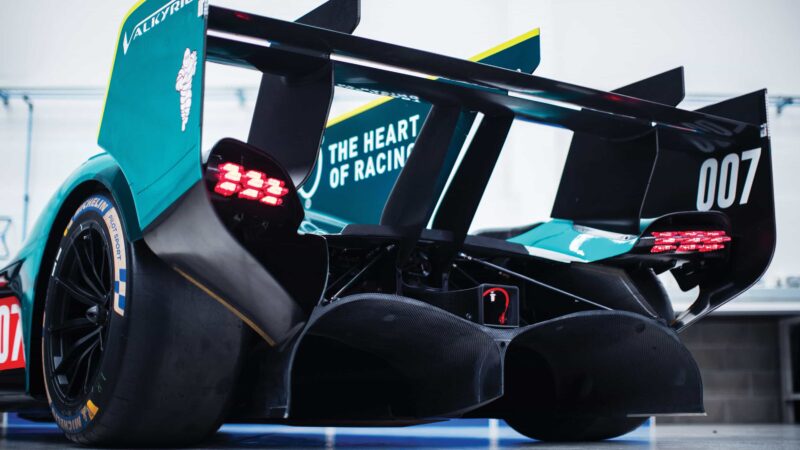
This season is a learning curve for the Aston THOR team
Its road car roots have not been lost, according to Riberas. “You can feel it without a doubt,” he says. “I have driven the Valkyrie AMR Pro on several track days and you can feel the essence of the car in the driving. It’s not only visually; when you drive it there are a lot of similarities in the car behaviour. That’s special because the car at Le Mans is a similar spec to the car on the road.”
For Ross Gunn, the 28-year-old Brit in the IMSA entry who completes the No007 line-up at Le Mans, Sebring represented a clear step on from what Aston Martin THOR had taken from Qatar. Maintaining that progression, each time the car hits the track, is the target between now and June, and then beyond to the end of the WEC and IMSA seasons.
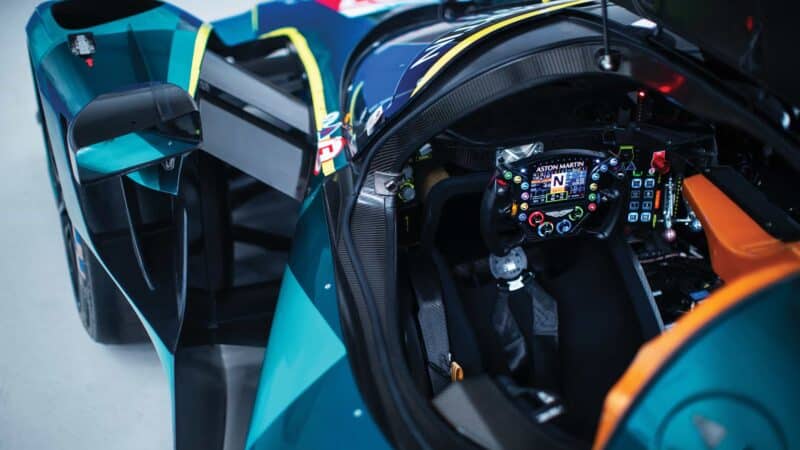
There’s an excitement around Aston’s return to top-class endurance racing – and fairy tales can come true at Le Mans, as Ferrari exhibited in 2023
Drew Gibson
“There is still a lot of improvement to make with dampers and shock absorbers,” says Gunn on the Sebring lessons. “Eventually and hopefully we can have something more driver friendly that isn’t so easy to spike the traction control. But in terms of inside the cockpit, the systems, the electric starter and so on, they ran smoothly, which is a big job in itself. We struggled in Qatar but improved by Sebring. It was encouraging. There were periods in the race when we could hang on to top competitors and that was a big surprise to a lot of us.”
So what should we expect for Le Mans? Naturally, there’s plenty of excitement to take this car to the Big One, but the drivers are not about to get carried away. Fan-favourite status will only carry them so far and they stick to a line that’s almost a team mantra: respect for our many rivals comes first, especially as Aston Martin is playing catch up.
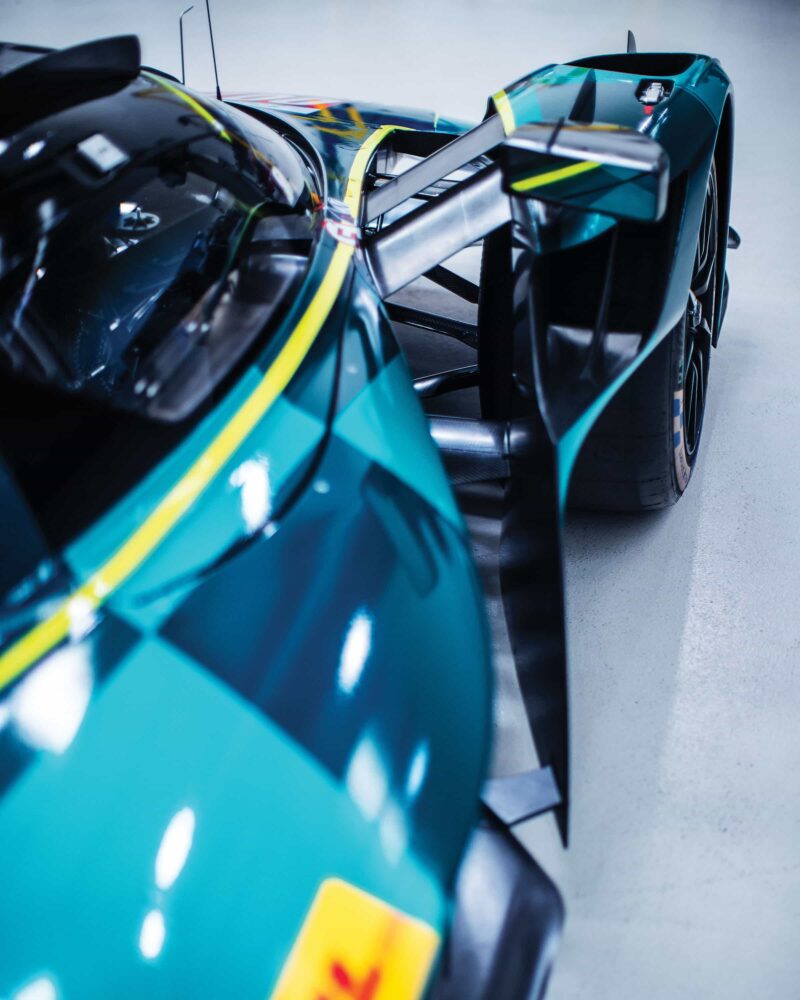
Aston Martin Valkyrie
Riberas perhaps sums it up best. “We are going to Le Mans with the goal of finishing the race. If we are able to do that given the amount of time we have with the car, if we are able to see the chequered flag and run a smooth race, that would equal success in my opinion. But obviously in this world we are all super-competitive and always look at the lap times, wanting to be better and stronger and closer to the top.
“The most important thing is we learn as much as possible from this year’s edition because that will give us the best chance of winning Le Mans sooner rather than later.”
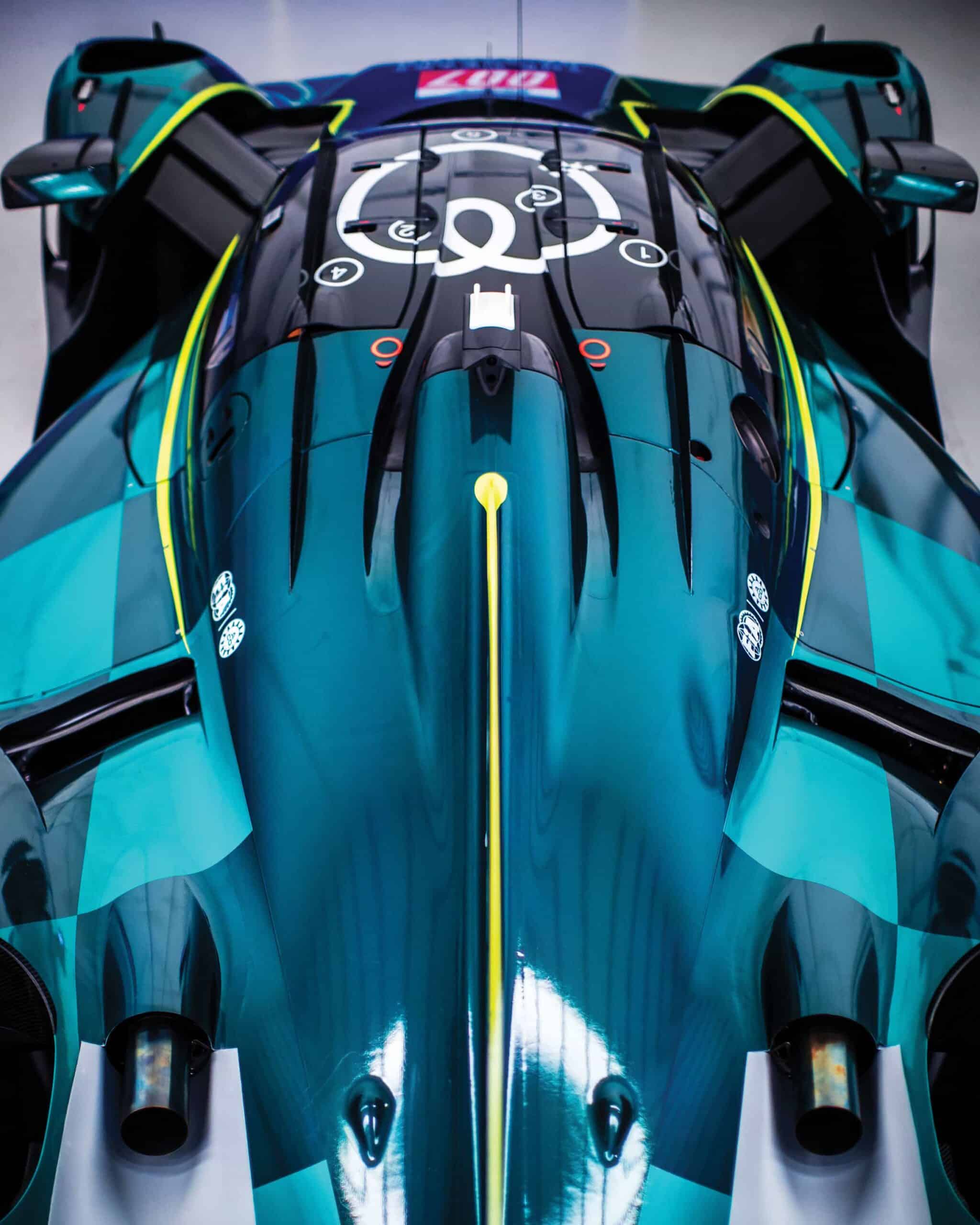
Aston Martin Valkyrie Spec
Chassis Carbon monocoque
Engine 6.5-litre V12 naturally aspirated
Power 680bhp
Transmission Xtrac seven- speed sequential, rear-wheel drive
Brakes Alcon 6-piston front and rear calipers, AP Racing carbon discs/pads
Suspension Double wishbone suspension front and rear, pushrod actuated torsion bar springs front and rear with adjustable side and central dampers
Wheels Forged aluminium 12.5x18in front, 14x18in rear
Tyres Michelin Pilot Sport 29/71 – 18 front, 34/71 – 18 rear
Weight 1030kg without driver and fuel (permitted minimum)